Newsletter
Sign up for The Wild
We’ll help you find the best places to hike, bike and run, as well as the perfect silent spots for meditation and yoga.
You may occasionally receive promotional content from the Los Angeles Times.
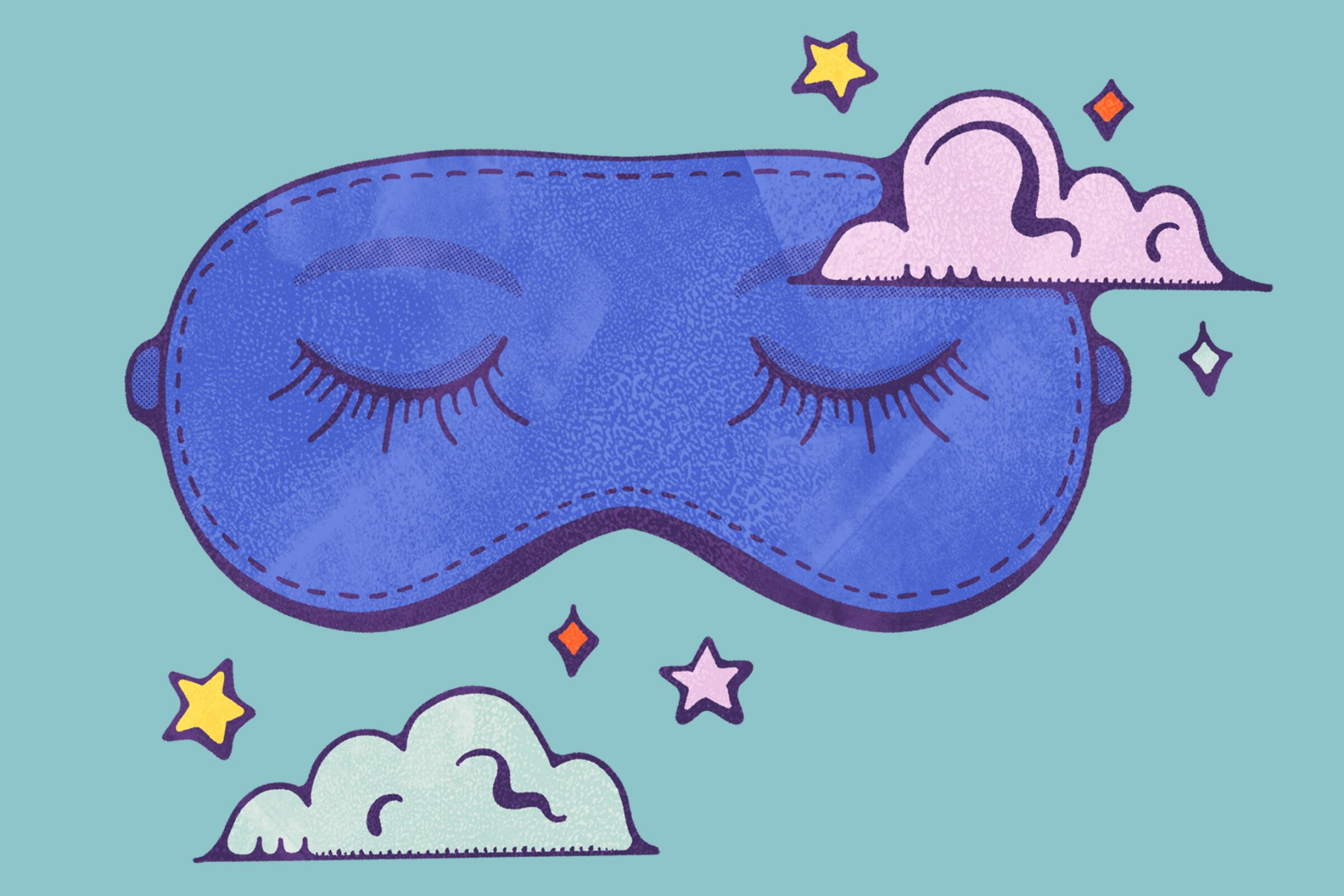
When you hear the phrase self-care, chances are you fall into one of two camps: You either want to retch violently or you want to raise a glass of wine in tribute (one that you’re somehow managing to drink while lying face-down on a massage table). Arguably, both responses are valid. The practice of self-care has strayed from its radical roots — more on those in a second — and evolved into a posh solution for myriad modern-day ailments, including but certainly not limited to long workdays, tense family gatherings, political conversations, and circling the parking garage at the Grove two days before Christmas.
But in its more nascent form, self-care, which surfaced as a term in the 1950s, was far less luxurious.
Before it became synonymous with the larger wellness movement, self-care was something doctors and health professionals encouraged among elderly and mentally ill populations; everyday practices, like personal grooming, were ways to reclaim a sense of autonomy.
In the years following, academics began exploring the ways self-care might combat the stress experienced by workers in high-octane fields (think healthcare or firefighting).
The idea was simple: Taking care of oneself — whether that meant addressing a physical need like eating, or a psychological need like engaging in therapy — would more adequately allow someone to take care of others. You hear it on airplanes all the time. Put on your own oxygen mask first before helping those around you.
By the 1970s, the practice had fanned out beyond medicine and into politics, particularly the women’s movement and the civil rights movement. Both promoted self-care as a critical component of their platforms, the notion being that an activist community is only as healthy as its unhealthiest member. In order to enact real change, there needed to be a real focus on well-being.
Do you need to partake in a little self-care going into this year? Use this flowchart to find out and discover 33 diverse methods for recharging your mind, body and soul.
Flash forward to 2022, and positioning self-care less as an act of self-indulgence and more as an act of self-preservation might sound odd — after all, the hashtag #selfcare has 57 million photos attached to it on Instagram (and counting).
But look back on the last two years and it’s evident that taking care of yourself — be it a bubble bath or getting enough sleep — isn’t selfish. It’s survival. So the question remains: Do you need to partake in a little self-care going into this year? Hint: The answer is yes. Here are 33 methods for recharging your mind, body and soul.
In the 1980s, University of Michigan psychologists Rachel and Stephen Kaplan put forth their Attention Restoration Theory (ART), which posits that restorative environments — such as nature — can lead to cognitive recovery (translation: nature can help you rebound from mental fatigue). And hey, we don’t pay that sunshine tax for nothing. Take advantage of our ample good-weather days and partake in some nature-fueled self-care that’s free (or close to it).
1. At the Peace Awareness Labyrinth & Gardens in Jefferson Park, you can not only spend time unwinding among lush greenery and 16 different water features but also meditatively walk the property’s travertine marble labyrinth, modeled after one in France’s Chartres Cathedral. (Not sure how to do a walking meditation? Not to worry — the garden’s site offers a few pointers for beginners.)
2. Nestled in Griffith Park is Amir’s Garden, a five-acre sanctuary named for Iranian immigrant Amir Dialameh. In 1971, Dialameh spotted what was then a charred hillside and spent more than 30 years turning it into a greenspace, one that today is replete with jacaranda trees and rose bushes. A half-mile hike from the trailhead at Mineral Wells Road and Griffith Park Drive will get you there.
3. In Van Nuys, SuihoEn, which translates to “garden of water and fragrance,” provides an escape for lovers of serenity and pop culture. The Japanese garden offers both dry and “wet-strolling” natural experiences, which are irrigated via the neighboring Donald C. Tillman Water Reclamation Plant. As for the pop culture part, keep your eyes peeled for the administration building, otherwise known as the Starfleet Academy from the “Star Trek” tv shows. (Note: SuihoEn is currently undergoing maintenance and is set to reopen in early 2022.)
If you’re someone who likes to be alone with other people, consider bringing the three Bs — blanket, book and a beverage — to one of the city’s many idyllic public parks.
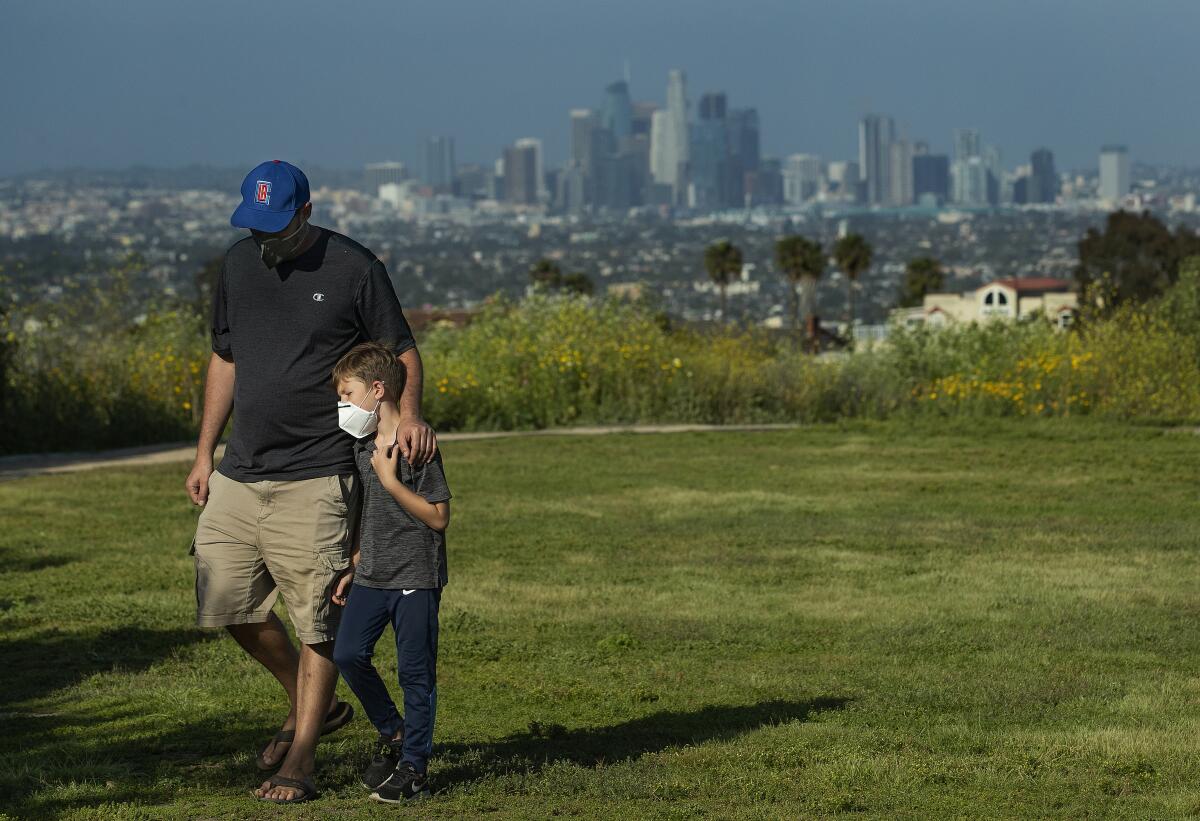
4. Kenneth Hahn State Recreation Area in Baldwin Hills boasts oak and eucalyptus groves, rolling lawns, a Japanese garden and even an Olympic forest (a collection of trees from the 140 countries that participated in the 1984 Olympic games).
5. At 2.66 acres, Culver City’s Carlson Park isn’t sprawling, but there’s ample grass, shade provided by mature trees, free parking and restrooms on site.
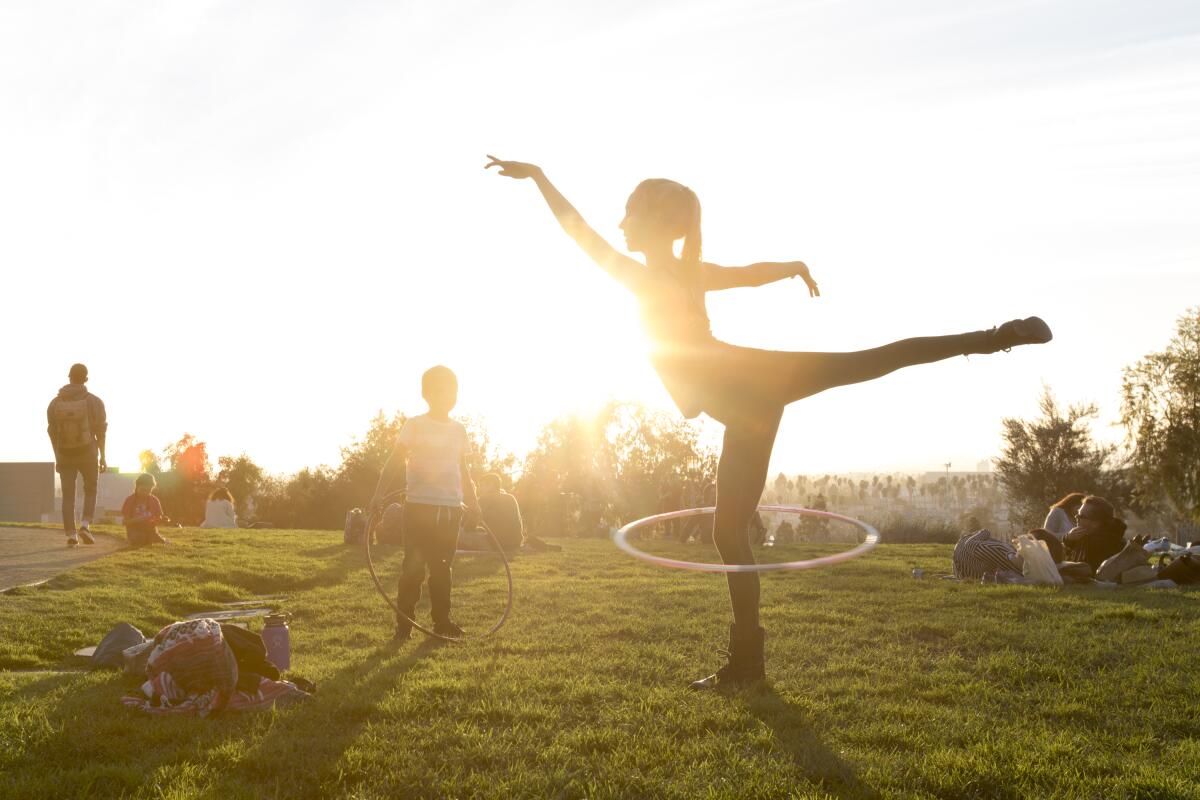
6. Barnsdall Art Park is one of East Hollywood’s stalwarts, with stunning views of the Hollywood sign and the Griffith Observatory. Pick up tacos from HomeState on Hollywood Boulevard and head over for an early-morning picnic, or swing by at dusk to soak in a classic I-can’t-believe-I-live-here L.A. view.
In a 2015 study published in the scientific journal Emotion, scientists from UC Berkeley discovered that activities which inspire awe — contemplating a breathtaking painting, beholding a staggering vista — can have “a direct influence upon health and life expectancy.” Another study out of the University of London in 2011 showed that looking at art increases blood flow to a pleasure center in the brain by as much as 10%, which is analogous to looking at someone you love. Thankfully, Los Angeles has no shortage of natural wonders, beautiful sights and picturesque landscapes to behold.
7. Endor-fiends might appreciate Beach Cycle in Santa Monica, where stationary cycling classes — offered from early morning through early evening — come with an unbeatable view of the Pacific.
8. Between the months of March and May, Chino Hills State Park explodes with California poppies and other wildflowers, from violet owl clovers to lupines.
9. Take a drive out to Saddleback Butte State Park in the Antelope Valley for an unprecedented view of the night sky unsullied by city lights.
10. How about a quiet walk in the wilderness? You can check out our guide to all things hiking at latimes.com/hiking, where you’ll find treks all around Southern California, for beginners and seasoned hikers alike.
Why hike in Los Angeles? Lots of reasons. Use our guide to navigate 50 trails in Southern California, plus tips on gear and treats for the trail.
L.A. is chockablock with world-class art institutions; now that many have reopened, strolling their hallowed halls could provide the ideal escape.
11. This year alone, you can catch an exhibition of work by collagist Barbara Kruger at Los Angeles County Museum of Art (March 20–July 17) ...
12. ... a Cy Twombly exhibition at the Getty Center, which includes never-before-displayed works from the artist’s personal collection (Aug. 2–Oct. 30) ...
13. ... and a retrospective of renowned Japanese filmmaker Hayao Miyazaki at the Academy Museum of Motion Pictures (through June 5).
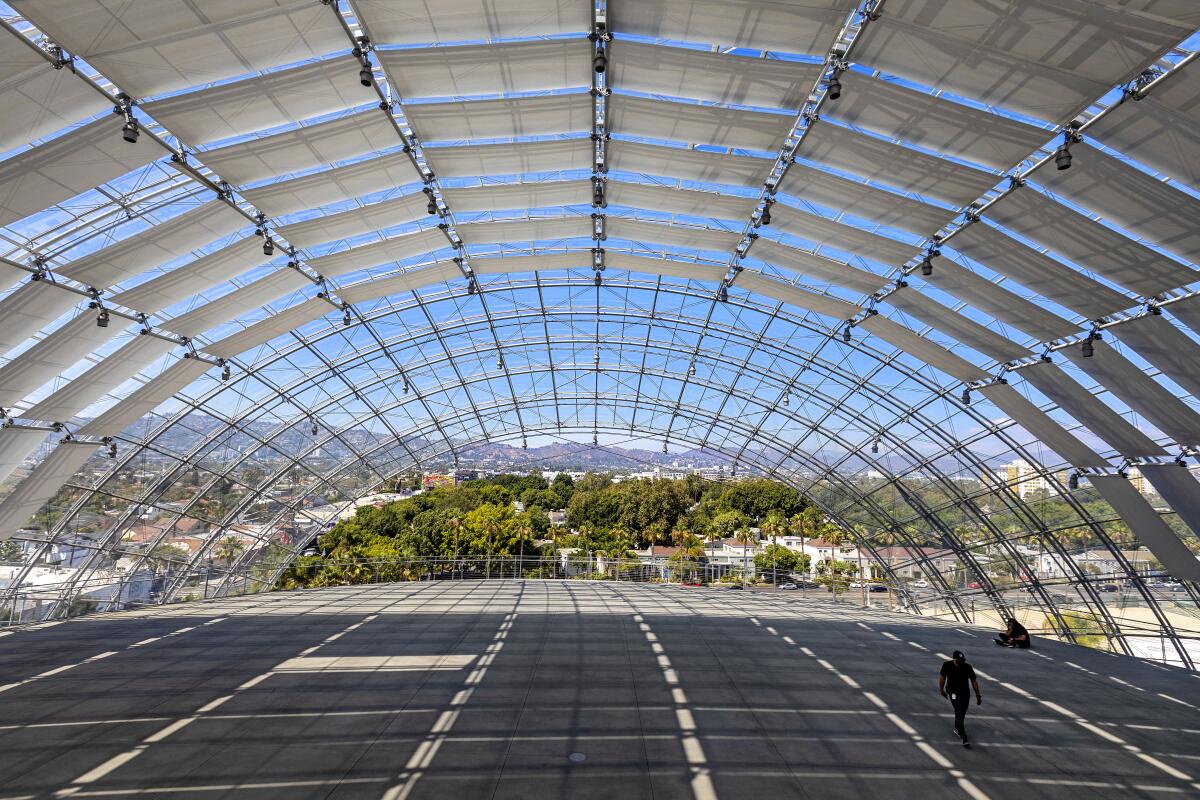
14. If you’re looking for something a little more offbeat, consider the Wende Museum in Culver City, which houses espionage equipment and other fascinating Cold War artifacts;
15. the Valley Relics Museum in Van Nuys, which will tickle L.A. nostalgists with its collection of classic cars, old restaurant menus and working arcade games from a bygone era;
16. or the Museum of Neon Art in Glendale, which bills itself as the only institution in the world dedicated to electric media-as-art.
There’s a reason so much of the self-care movement focuses on rejuvenation of the body: often those rituals are the only times when you’re forced into peaceful (read: phoneless) solitude. The best part? There’s a treatment for every budget.
Wallet-friendly options
17. The beautiful thing about self-care is that pretty much anything qualifies, as long as it refills your coffers. The easiest way to do so? Sleeping. Whether it’s a 20-minute power nap or prioritizing an earlier bedtime, studies have shown that sleep is an imperative ingredient in physical and mental development. (If you’re on the hunt for some better sleeping strategies, consider picking up “Why We Sleep: Unlocking the Power of Sleep and Dreams” by Matthew Walker, the founder and director of the Center for Human Sleep Science at UC Berkeley.)
18. Other easy home remedies: a good old-fashioned bath taken by the light of your favorite mood-setting candles ...
19. ... 30 minutes of stretching or foam-rolling ...
20. ... or dancing around your house like no one is watching (yes, really — a 2021 study out of UCLA showed that “conscious,” or unchoreographed, dance can stave off anxiety, depression and trauma).
21. Deprive your senses (in the best way) at Float Lab, where $45 buys you two hours of time in a pitch black, zero-gravity, sound resistant tank filled with an epsom salt solution (locations in Venice and Westwood). The alleged benefits? Improved sleep, reduced stress and fueled creativity.
22. For bodywork, options abound: massages at serene spa chain the Now start at $50 (multiple locations).
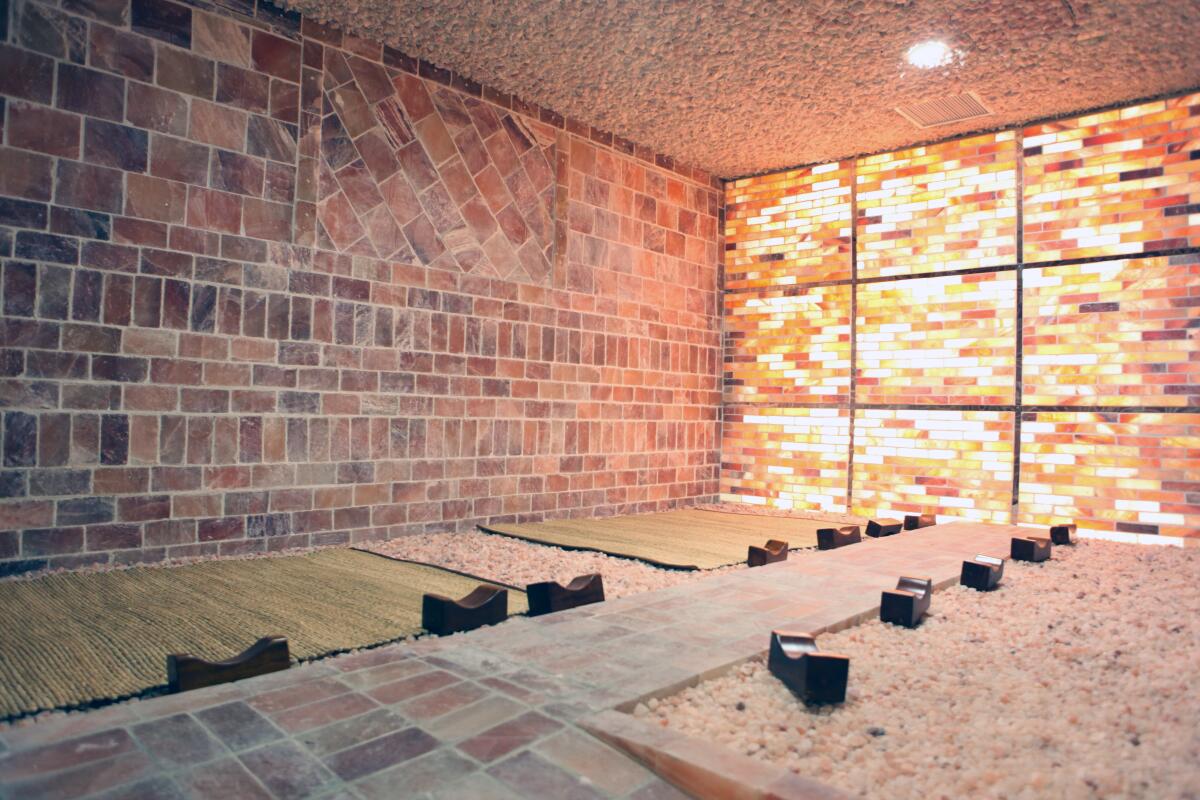
23. Just $30 can buy you a day pass at Westlake’s 24-hour Wi Spa, where you can find your Zen in five different mineral saunas or take a plunge in hot and cold pools (add-ons ranging from acupressure treatments to CBD massages are available for an extra fee).
24. At SaunaBar in Brentwood, first-timers can experience a 30-minute infrared sauna treatment for a discounted $70 rate, a service that proponents say lowers stress levels and improves immunity.
25. If you’re really looking to splurge, the spa at Hotel Bel-Air offers a variety of retreats for all types of weary bones (dorchestercollection.com). Its 3 1/2-hour Ultimate Escape package — which includes a signature massage, a hydrating facial, a manicure and a pedicure — is the height of decadence (with a $645 price tag to match).
26. If it’s a skin treatment you’re after, try the 60-minute Supernova facial at Joanna Vargas salon in West Hollywood’s Sunset Tower Hotel (joannavargas.com). The $325 treatment packs a number of anti-aging punches, including microcurrent contouring (which purportedly lifts and sculpts facial muscles) and cryotherapy (said to promote circulation and reduce inflammation).
27. For a total-body experience, consider dipping a toe into the biohacking movement and joining a facility like NextHealth (next-health.com, locations in West Hollywood and Century City), where $299 a month grants you access to cutting-edge health tech, including hyperbaric oxygen chambers (which can promote healing) and visia facial scans (said to identify skin damage before it’s visible on the surface).
Restoring your soul, mind and heart is a subjective business, but there are some methods that might send them soaring.
28. One of the easiest ways to affect real change is to practice positive thinking and self-talk. According to the Mayo Clinic, a little optimism goes a long way: The practice can increase your lifespan, keep the common cold at bay, and even reduce the risk of death from cardiovascular disease.
29. Another avenue might be reigniting your passion for an old hobby, whether that means joining a local choir and reliving your college a cappella days, or pulling out the tap shoes that have been gathering dust under your bed.
30. If stillness is what you seek, try meditation ...
31. ... or church or other similar spiritual practices that allow you to think about the big picture and find comfort in that.
32. Animal lovers might find respite in animal-assisted therapy — the simple act of petting cats, dogs, horses and the like — which is said to release serotonin, prolactin, and oxytocin, all hormones that play a part in relaxation and mood elevation, according to UCLA research. Where to start? How about walking a busy neighbor’s dog or offering to cat sit for someone who travels frequently.
33. But perhaps more than any other therapy, giving yourself permission to say no can do wonders for mental rehabilitation, experts say. Try canceling three plans you said yes to out of obligation and opt to partake in any of the activities mentioned here (or simply sit on your couch with takeout). You might be surprised at how quickly you’re able to bounce back to 100%.
Sign up for The Wild
We’ll help you find the best places to hike, bike and run, as well as the perfect silent spots for meditation and yoga.
You may occasionally receive promotional content from the Los Angeles Times.